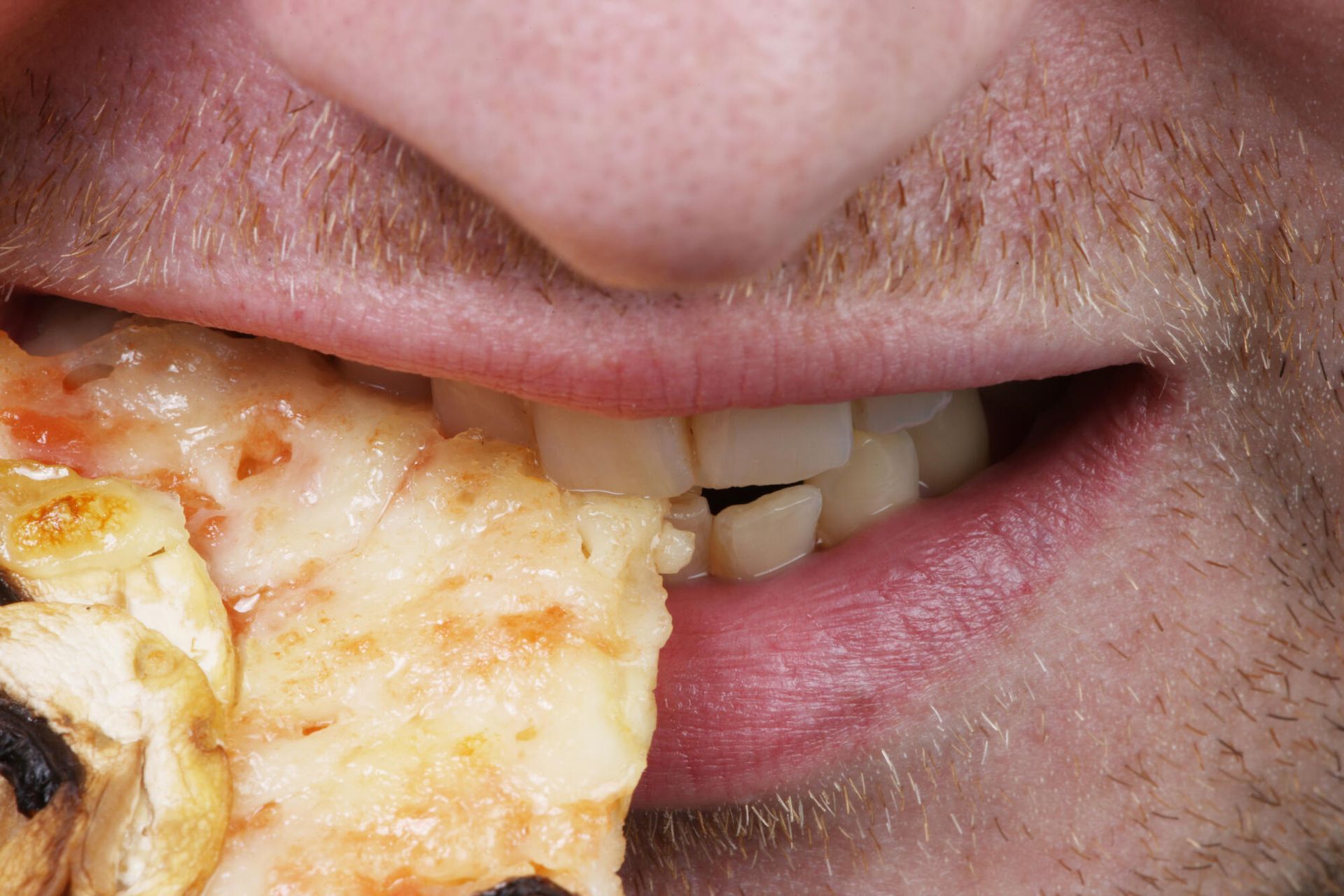Mealtime Misery: When Difficulty Chewing Points to a TMJ Disorder
TMJ disorders are conditions that affect the temporomandibular joint (TMJ), which connects the jaw to the skull. The joint is crucial for movements like chewing, speaking, and yawning.
When this joint or the muscles surrounding it are injured or stressed, it can lead to jaw dysfunction and pain. TMJ disorders can develop for a variety of reasons, and the pain associated with them can make everyday activities, like eating, difficult.
The temporomandibular joint is one of the most used joints in the body, responsible for both up-and-down and side-to-side movements of the jaw. This joint allows you to bite, chew, speak, and swallow.
Any dysfunction in this joint can lead to pain and discomfort that can be felt throughout the jaw, face, and neck area.
Understanding TMJ Disorder
TMJ disorders are conditions that affect the temporomandibular joint (TMJ), which connects the jaw to the skull. The joint is crucial for movements like chewing, speaking, and yawning.
When this joint or the muscles surrounding it are injured or stressed, it can lead to jaw dysfunction and pain. TMJ disorders can develop for a variety of reasons, and the pain associated with them can make everyday activities, like eating, difficult.
The temporomandibular joint is one of the most used joints in the body, responsible for both up-and-down and side-to-side movements of the jaw. This joint allows you to bite, chew, speak, and swallow.
Any dysfunction in this joint can lead to pain and discomfort that can be felt throughout the jaw, face, and neck area.
The Impact of TMJ Pain on Mealtime
TMJ pain can make simple tasks, like eating, difficult and uncomfortable. Here are the key ways TMJ pain impacts mealtimes:
- Difficulty Chewing
- Limited Food Choices
- Discomfort during Eating
Difficulty Chewing
One of the most noticeable symptoms of a TMJ disorder is difficulty chewing. The pain in the jaw joint and muscles makes it hard to bite into food or break it down properly. Foods that require any amount of force or movement can cause discomfort, and some may avoid chewing altogether to minimize pain.
Limited Food Choices
People with TMJ disorders often find themselves limiting their food choices. Tough, chewy, or crunchy foods, like raw vegetables or steak, can be especially difficult to eat.
As a result, many individuals turn to softer foods, which may not provide the same nutritional benefits. This limitation can affect the overall diet and enjoyment of meals.
Discomfort During Eating
The pain caused by TMJ disorder can extend beyond just chewing. Some individuals experience jaw fatigue or soreness during meals.
The strain on the jaw muscles, along with any clicking or popping sounds in the joint, can make eating a frustrating and painful experience. The discomfort can even last after eating, leading to lingering soreness in the face and jaw.
Common Causes of TMJ Disorder
Some causes are related to injury, while others result from repetitive stress or misalignment of the teeth. There are several common causes of TMJ disorder:
- Injury or Trauma
- Teeth Grinding and Jaw Clenching
- Misaligned Bite or Jaw
Injury or Trauma
A past injury, such as a blow to the face or jaw, can cause damage to the temporomandibular joint, leading to a TMJ disorder. Whiplash injuries from car accidents are also a common cause, as they can strain the muscles and ligaments surrounding the jaw.
In many cases, this type of trauma can lead to long-term discomfort and difficulty with jaw movement.
Teeth Grinding and Jaw Clenching
Teeth grinding, also known as bruxism, and jaw clenching are often caused by stress or anxiety. These habits put pressure on the TMJ and the muscles surrounding it, which can result in inflammation and pain. Over time, this constant strain can lead to a TMJ disorder, making everyday activities, like chewing, challenging.
Misaligned Bite or Jaw
When the teeth do not align properly, it can put added stress on the TMJ. A misaligned bite can cause uneven pressure on the jaw joint, leading to pain and discomfort.
In some cases, this misalignment can be genetic, while in others, it may be caused by factors such as tooth loss or poor dental habits. A dentist can help determine if a misaligned bite is contributing to TMJ pain.
TMJ Treatment
Treatment for TMJ disorders is designed to reduce pain and restore the normal function of the jaw. Here are the main treatment options:
- Conservative Treatments
- Medical Treatments
- Surgical Options
Conservative Treatments
For many people, conservative treatments offer relief from TMJ pain. These include methods like applying ice or heat to the jaw area, practicing relaxation techniques, and using over-the-counter pain medications.
Dental professionals may recommend wearing a nightguard to prevent teeth grinding during sleep. These noninvasive methods often help ease the tension around the jaw joint and reduce discomfort.
Medical Treatments
In some cases, medical treatments are necessary to address more severe symptoms. A doctor may prescribe muscle relaxants or anti-inflammatory drugs to reduce pain and swelling.
Physical therapy is another common treatment. A trained therapist can guide you through exercises that help improve jaw movement and strengthen the muscles around the TMJ.
In some instances, Botox injections may also be used to relieve muscle spasms in the jaw.
Surgical Options
Surgical options are typically reserved for more severe cases of TMJ disorder that don't respond to other treatments. Surgery might involve repairing or replacing the joint or reshaping the teeth to correct a misaligned bite.
However, surgery is considered a last resort after other treatments have been tried and failed.
Identifying the Symptoms of TMJ Disorder
Recognizing the symptoms of a TMJ disorder is key to seeking the right treatment. TMJ pain can show itself in many ways, making it important to understand the signs.
People with TMJ disorders often experience a combination of discomfort in the jaw and other related symptoms. If you are having trouble with mealtimes or notice pain in your jaw, it could be a sign of TMJ disorder.
Here are the most common symptoms to look out for:
- Jaw Pain and Tenderness
- Headaches and Earaches
- Clicking or Popping Sounds
Jaw Pain and Tenderness
The most noticeable symptom of a TMJ disorder is pain in the jaw. This pain may be constant or come and go, and it can vary from mild to severe.
Many people report tenderness around the jaw joint, especially when they chew or talk. The pain can spread to the face, neck, or even the shoulders in some cases.
Headaches and Earaches
TMJ disorders are often linked to frequent headaches. These headaches are usually felt in the temples or behind the eyes.
They can be severe and occur along with other symptoms, such as earaches. The pain can make it hard to focus or enjoy daily activities, especially eating.
Clicking or Popping Sounds
Another common symptom of a TMJ disorder is a clicking or popping sound when moving the jaw. This sound may occur when chewing, speaking, or yawning.
In some cases, it may be accompanied by pain or a feeling of the jaw locking or catching. These sounds are a result of the joint not functioning correctly.
Managing Difficulty Chewing with TMJ
Living with TMJ disorder can make it difficult to enjoy meals. Understanding the causes and symptoms is key to managing the condition.
With proper treatment and lifestyle adjustments, those affected by TMJ disorder can find relief and improve their quality of life. Seeking out professional help is essential for effective management.
Here are some helpful tips for managing difficulty chewing:
- Choosing Softer Foods
- Eating Smaller Bites
- Using Jaw Exercises
Choosing Softer Foods
One of the easiest ways to manage difficulty chewing is by opting for softer foods. Foods like mashed potatoes, soups, smoothies, and well-cooked vegetables can be easier to chew and cause less strain on the jaw. Choosing foods that don't require heavy chewing can make mealtime less painful and more enjoyable.
Eating Smaller Bites
Taking smaller bites of food can help reduce the pressure placed on the jaw. When you eat smaller portions, your jaw doesn't have to work as hard to break down the food.
This simple change can make a big difference in reducing TMJ pain while eating.
Using Jaw Exercises
Doing jaw exercises can help strengthen the muscles around the TMJ and improve jaw mobility. A physical therapist or dentist can recommend specific exercises to reduce discomfort and prevent further damage.
Regularly performing these exercises can help ease the pain caused by TMJ disorder and improve overall jaw function.
Treating Jaw Disorder
TMJ disorder can make everyday activities, especially eating, painful and challenging. Understanding the causes and symptoms is key to managing the condition.
With proper treatment and lifestyle adjustments, those affected by TMJ disorder can find relief and improve their quality of life. Seeking professional help is essential for effective management.
At our practice, Dr. Bernard Lynch, DMD, FAGD, LVIF, is dedicated to providing top-quality dental care for long-term oral health and beautiful smiles. He stays updated on the latest dental technology and focuses on patient comfort throughout every visit.
Dr. Lynch takes a holistic approach, aiming to prevent dental issues before they worsen, and ensures each patient receives personalized care for their unique needs.
Get in touch today to find out how we can
help with your dental care!












